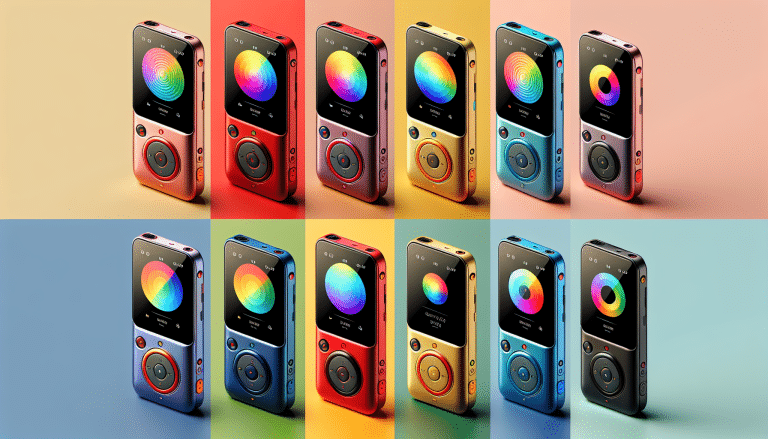Understanding the Concept of Co-Branding in Advertising
Ever seen a TV commercial that features both Coca Cola and McDonald’s? Or perhaps a digital ad showcasing the collaboration between Nike and Apple? If yes, then you’ve already experienced the concept of co-branding in advertising. But what exactly does this mean? Let’s dive in.
Co-branding, in a nutshell, is a strategic marketing partnership between two brands where the success of one brand brings success to its partner brand too. The overall intention is to leverage the strengths of each partner for their mutual benefit, allowing them to reach a wider audience or improve their product offering.
Why Co-Branding?
In today’s fiercely competitive business landscape, brands are always on the lookout for innovative and effective ways to boost their market presence. This is where co-branding swoops in to save the day! By pooling resources, sharing audiences and leveraging the strengths of each other, brands can create a powerful synergy that can help them achieve their marketing goals more effectively.
The Types of Co-Branding
Co-branding is not a one-size-fits-all strategy. It can take different forms based on the objectives and capabilities of the partner brands. Here are the most common types:
- Ingredient co-branding: This involves one brand being a part of another, as an ingredient or component. A prime example is the collaboration between Intel and Dell, where Intel’s processors are a key component of Dell’s computers.
- Retail co-branding: Ever noticed how some Starbucks cafes are located inside Barnes & Noble bookstores? That’s retail co-branding, where brands collaborate at a retail level.
- Joint venture co-branding: This is when two brands come together to create a new product. Think of the Hershey’s flavored Lip Balm by Blistex.
- Mutual endorsement: This is when two brands endorse each other’s products. An example would be the promotion of Spotify playlists on Uber app.
Remember, no matter what form it takes, the primary goal of co-branding is to create a win-win situation for all the brands involved. By understanding the concept of co-branding in advertising, brands can explore exciting opportunities for growth and reach that were previously untapped.
Key Dynamics of Successful Co-Branding Strategies
Co-branding is like a dance, where two brands come together to create a symphony that resonates with their audience. But how do these brands create a harmonious tune without stepping on each other’s toes? Here are the key dynamics of successful co-branding strategies.
1. Synergy is key:The first thing to consider when planning a co-branding strategy is synergy. Both brands should share a common goal and must be able to complement each other. It’s like a perfect recipe where each ingredient enhances the other’s flavor. For example, a high-end makeup brand co-branding with a luxury car brand might seem like a mismatch. But, if both share the same goal of luxury and elegance, this association can create a unique selling proposition. Remember, it’s all about creating a consistent brand experience.
2. Equal value proposition:A successful co-branding strategy provides an equal value proposition for both brands. It shouldn’t be a one-sided affair where only one brand enjoys the benefits. After all, it’s a partnership, not a charity! Both brands should be able to benefit from the unique strengths of the other, be it a wider customer base, increased visibility, or access to new markets.
3. Clear communication:Clear and consistent communication between the two brands is another important dynamic. Both brands must have a deep understanding of each other’s values, expectations, and brand guidelines. Only then can they project a consistent message to their customers. This could involve regular meetings, brainstorming sessions, and even joint market research.
- Synergy is key
- Equal value proposition
- Clear communication
Remember, it’s all about balance!
In a balanced co-branding strategy, both brands must retain their individual identities while creating a new, combined identity. It’s like a well-choreographed dance, where each dancer shines individually but also complements the other. So next time you plan a co-branding strategy, don’t forget these key dynamics, because in the end, it’s all about creating a win-win situation for both brands.
Leveraging Partnerships for Mutual Brand Enhancement
The world of advertising can be likened to a vast sea filled with countless ships all vying for attention. The ships, in this context, are brands competing to be seen and heard. In such a crowded space, the concept of co-branding serves as a powerful tool to propel your brand forward, but only when done right. Let’s dive into how to leverage partnerships for mutual brand enhancement.
Identify Your Value Proposition
Understanding your value proposition is the first step in any successful co-branding strategy. This refers to what sets your brand apart, what you bring to the table that others might not. By figuring out what your unique selling points are, you can better identify potential partners who complement your strengths and make your offer even more compelling to customers.
Select the Right Partner
The choice of your co-branding partner is critical. The ideal partnership is one where both brands share a similar ethos or vision, and equally benefit from the alliance. For instance, if your brand is committed to sustainability, partnering with an organization known for its environmental initiatives will reinforce your message and expand your reach.
Establish Shared Goals
Partnerships thrive when there is a clear understanding of what both parties hope to achieve. Detailed discussions and planning are crucial at this stage. By aligning your goals, you can ensure that the co-branded campaign benefits both brands and leads to mutual growth.
Communicate Effectively
Clear and consistent communication forms the backbone of a successful partnership. Whether it’s discussing creative ideas, resolving potential issues, or coordinating marketing strategies, maintaining open lines of communication ensures all parties are on the same page and working towards the same objective.
Monitor and Evaluate
Finally, an often overlooked but vital aspect of co-branding is to consistently monitor and evaluate the campaign’s performance. By tracking metrics and analyzing the data, you can gather insights to optimize your strategy and ensure your partnership continues to drive value for both brands.
Remember, co-branding isn’t about losing your individuality, but rather coming together to create something greater. By leveraging partnerships effectively, you can enhance your brand’s reach, reputation, and bottom line, while offering your customers something uniquely valuable.
Case Studies: Successful Co-branding Campaigns in Advertising
Let’s take a walk down memory lane and dive into some of the most successful co-branding campaigns to ever hit advertising. These partnerships not only left their mark, but also taught us valuable lessons on co-branding strategies.
Apple and Starbucks:
Nothing illustrates a successful co-branding partnership better than the iconic alliance between Apple and Starbucks. Back in 2007, Starbucks announced that customers could now find the Starbucks icon on their Apple devices, enabling them to identify and purchase songs being played at their local Starbucks. This resulted in increased sales for Apple and a unique music identity for Starbucks. The key takeaway? Align your brand with another that shares similar values and audience.
Uber and Spotify:
Another stellar example of a successful co-branding campaign is the Uber and Spotify partnership. This 2014 collaboration allowed Uber users to customize their rides by playing their personal Spotify playlists during the trip. This certainly amplified the user experience of both brands, demonstrating how co-branding can enhance value by combining unique selling propositions.
GoPro and Red Bull:
The GoPro and Red Bull partnership is a testament to the power of synergy. Both brands share a common audience – thrill-seekers and adventurers. This led to the groundbreaking campaign ‘Red Bull Stratos’, where extreme athlete Felix Baumgartner parachuted from space while recording with a GoPro. This event created a buzz worldwide, boosting brand visibility significantly for both companies.
UNICEF and Target:
Last but not least, let’s take a look at the heartwarming campaign by UNICEF and Target. In this mutually beneficial collaboration, Target created a line of fitness bands for kids and linked it with UNICEF’s Kid Power initiative. For every step kids took wearing the fitness band, a therapeutic food packet was donated to a malnourished child. This campaign was not only emotionally resonating, but it also underscored how co-branding can impact society positively.
From these case studies, we can see that successful co-branding is not just about sales or marketing, but about creating a bond with your audience that resonates with your brand values. Whether it’s enhancing customer experience or promoting social responsibility, co-branding can significantly amplify a brand’s reach and impact.












